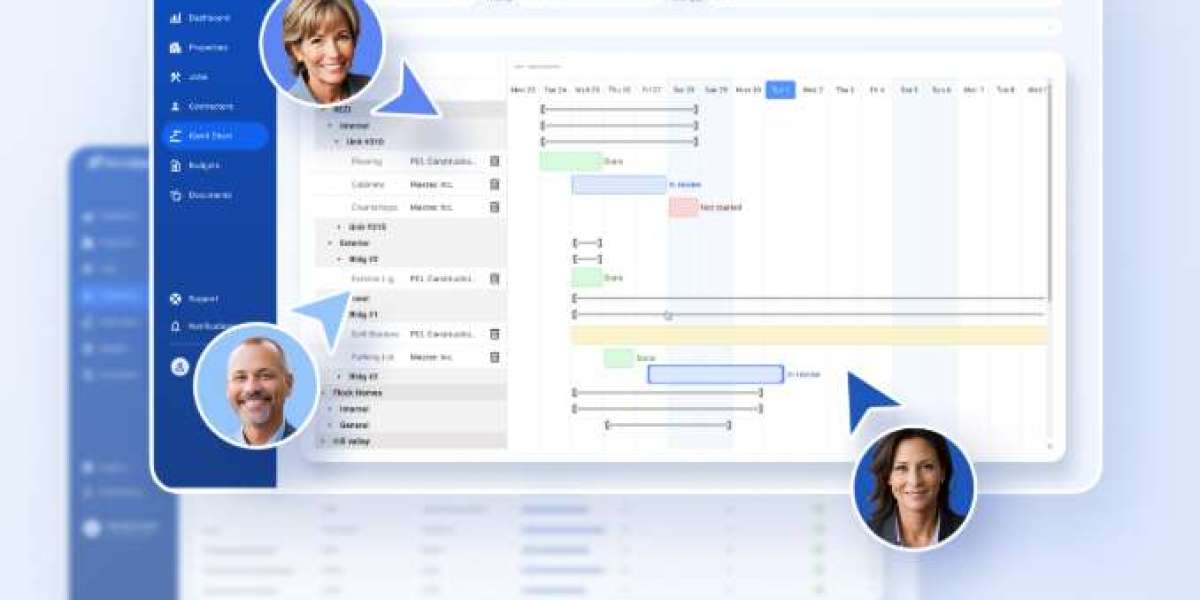Understanding Construction Software
Construction software is a broad term used to describe a variety of digital tools and systems designed to streamline, automate, and optimize various aspects of construction projects. These tools help with everything from budgeting, scheduling, and resource management to project tracking, communication, and safety compliance. The software addresses common challenges faced by contractors, architects, engineers, and project managers by providing integrated solutions that improve productivity and reduce risks.
In essence, construction software enables businesses to manage multiple tasks and operations from one centralized platform, making it easier to coordinate efforts, track progress, and meet deadlines. Whether it’s a small residential project or a large-scale infrastructure development, construction software plays a vital role in ensuring that the project is completed on time, within budget, and according to specifications.
Types of Construction Software
The vast array of available construction software can be categorized into several types, each designed to address specific needs within the construction process. Here are the main types of construction software used in the industry:
Project Management Software: This is perhaps the most widely used construction software type. Project management software helps construction managers plan, execute, and monitor projects from start to finish. It includes tools for scheduling, task assignment, progress tracking, and document management. Popular examples include Procore, Buildertrend, and CoConstruct.
Construction Accounting Software: Managing finances in a construction project can be complex, especially when dealing with multiple vendors, contracts, and change orders. Construction accounting software helps companies maintain financial accuracy, track expenses, manage payroll, and generate reports. Examples include QuickBooks for Contractors and Foundation Software.
Estimating Software: Accurate estimation of costs is critical to the success of a construction project. Estimating software helps contractors calculate material costs, labor expenses, and other necessary resources required for a project. This software improves accuracy and reduces the likelihood of costly errors. Some popular tools are Buildertrend, ProEst, and PlanSwift.
Design and BIM (Building Information Modeling) Software: Design software and BIM tools are essential for architects and engineers. BIM software allows for the creation of detailed 3D models of construction projects, which helps visualize the project before it’s built. This helps identify potential problems, improve design efficiency, and reduce costs. Well-known software in this category includes Autodesk Revit and ArchiCAD.
Field Management Software: Field management software is used by construction workers on the job site to report progress, track work completed, and ensure safety. These tools help supervisors oversee daily operations and ensure that everything is proceeding as planned. Examples include Raken and Fieldwire.
Safety Management Software: Safety is a top priority on construction sites. Safety management software helps identify hazards, track incidents, and ensure compliance with safety regulations. This type of software aids in risk mitigation and ensures that the worksite remains safe for workers. Examples include SafetyCulture and Procore Safety.
Document Management Software: Construction projects often generate vast amounts of documents such as blueprints, contracts, permits, and change orders. Document management software helps organize and store these documents in a centralized digital repository, making them easily accessible to project stakeholders. Popular options are DocuSign and Procore Document Management.
Collaboration Software: Collaboration software enhances communication between the various stakeholders in a construction project, including the client, project managers, contractors, and subcontractors. It allows for seamless communication, file sharing, and real-time updates. Tools like Slack, Microsoft Teams, and Asana are commonly used for this purpose.
Benefits of Construction Software
The introduction of construction software has brought numerous benefits to the construction industry, improving project outcomes, and enhancing the overall experience for clients and contractors alike. Here are some key advantages:
Increased Efficiency and Productivity: Construction software streamlines many processes, such as scheduling, task assignment, and budgeting, allowing teams to focus on completing the project rather than dealing with administrative tasks. With automated processes, there is less manual intervention, reducing the time spent on routine tasks and boosting overall productivity.
Enhanced Collaboration: By centralizing communication, construction software ensures that all stakeholders have access to the same information at the same time. This reduces miscommunication and keeps everyone on the same page. Real-time updates and notifications further improve collaboration and decision-making.
Better Budget Management: With accurate cost estimates, tracking tools, and financial reports, construction software enables project managers to stay on top of expenses and avoid budget overruns. Real-time monitoring of costs ensures that resources are used efficiently, and any potential financial issues can be addressed promptly.
Improved Quality Control: Construction software helps ensure that projects meet the required standards by allowing project managers to track quality metrics, manage inspections, and maintain compliance with safety regulations. The software also helps keep all project documentation in one place, making it easier to review and maintain high standards throughout the process.
Enhanced Project Transparency: Construction software offers greater visibility into every aspect of a project, from initial planning to final delivery. Stakeholders can track progress, monitor costs, and review documents easily, which fosters trust between clients, contractors, and project managers. This transparency helps avoid misunderstandings and provides valuable insights for future projects.
Risk Management and Safety Compliance: Construction software helps identify potential risks and safety hazards early on, allowing project managers to take preventative measures before issues escalate. Additionally, it helps track compliance with safety regulations, ensuring that workers adhere to safety standards, thus reducing the risk of accidents on the job site.
Time Savings: With construction software, tasks such as scheduling, project tracking, and resource allocation are streamlined, saving time for all parties involved. Automation reduces the need for manual data entry, while real-time project tracking ensures that teams remain on schedule, helping to avoid costly delays.
Why Construction Software is Essential for Construction Companies
In today’s competitive construction industry, adopting construction software is not just a trend—it’s a necessity. Here are some key reasons why construction companies should invest in these tools:
Competitive Advantage: Construction companies that utilize the latest software are more likely to deliver projects on time and within budget. This gives them a competitive edge in the market, as clients are more likely to trust companies that can provide transparency and efficiency.
Scalability: Construction software grows with your business. Whether you’re managing one project or handling multiple projects at once, software solutions can scale to meet your evolving needs. This flexibility ensures that your company can continue to operate smoothly as it expands.
Improved Decision-Making: The data collected through construction software provides valuable insights into project performance. Project managers can use this information to make more informed decisions, whether it’s adjusting timelines, reallocating resources, or optimizing processes.
Cost-Effective: Although the initial investment in construction software may seem high, the long-term savings are significant. By reducing administrative costs, minimizing mistakes, improving efficiency, and preventing budget overruns, construction software ultimately leads to better profitability.
Client Satisfaction: When clients see that their projects are being managed using advanced software, they gain confidence in the construction company’s ability to deliver high-quality results. Additionally, real-time project tracking and reporting enhance the client experience by keeping them informed every step of the way.
Conclusion
The role of construction software in the modern construction industry cannot be overstated. From improving project management and financial tracking to enhancing collaboration and safety, the software’s benefits are clear. As construction companies face increasing pressure to deliver high-quality results on time and within budget, embracing technology is no longer optional—it’s a critical part of staying competitive and efficient in the marketplace.
If you are involved in the construction industry and are looking to streamline your operations, improve project outcomes, and reduce costs, it’s time to explore construction software options that fit your business needs. With the right tools in place, you can ensure that your projects run smoothly, reduce risks, and boost profitability. The future of construction is digital, and adopting construction software is the first step toward building a more efficient and successful business.





